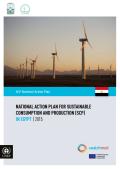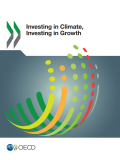
Achieving a growth path that is resilient, inclusive and sustainable is one of the top policy priorities of our time. Governments around the world are facing the triple imperatives of re-invigorating growth while improving livelihoods and urgently tackling climate change, in line with the goals of the Paris Agreement. This report argues that boosting economic growth, improving productivity and reducing inequalities need not come at the expense of locking the world into a high-emissions future. It is the quality of growth that matters. With the right policies and incentives in place – notably strong fiscal and structural reform combined with coherent climate policy – governments can generate growth that will significantly reduce the risks of climate change, while also providing near-term economic, employment and health benefits. Such a climate-compatible policy package can increase longrun GDP by up to 2.8% on average across the G20 in 2050 relative to a continuation of current policies. If the positive impacts of avoiding climate damage are also taken into account, the net effect on GDP in 2050 rises to nearly 5% across developed and emerging economies of the G20.
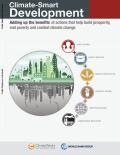
Officials responsible for a nation’s economy have been primarily concerned with delivering jobs, stimulating growth, and promoting competitiveness. They are also becoming worried about the effects climate change will inflict on their country’s economic future. Increasingly, these officials want to know if there are investments and efforts that can advance urgent development priorities and, at the same time address the challenges of our rapidly warming world.
This report uses new modeling tools to examine the full range of benefits ambitious climate mitigation policies can produce across the transportation, industry and building sectors in the United States, China, the European Union, India, Mexico and Brazil. This report also describes the multiple benefits of four development project simulations scaled up to the national level.
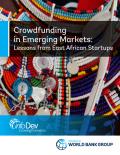
Crowdfunding is the practice of raising monetary contributions from a large number of people, typically online, to fund a project or venture. In the past 10 years, crowdfunding has evolved into a $16 billion market, largely concentrated in North America and Europe. In developing countries, the crowdfunding market is expected to reach $327 million this year—about 2 percent of the global total. Despite this slow adoption, crowdfunding has been heralded as an opportunity to expand access to capital for entrepreneurs.
To better understand the challenges of crowdfunding in emerging markets, the World Bank Group conducted interviews with a number of East African technology entrepreneurs who ran crowdfunding campaigns, both successful and unsuccessful. From the interviews emerged six lessons about when, why, and how to launch crowdfunding campaigns.
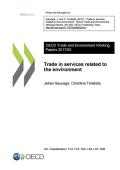
This paper discusses the nature and scope of international trade in environmentally related services, and analyses the implications that services trade restrictions have on the provisions of these services domestically and abroad. Numerous services appear crucial to the delivery and proper functioning of environmental goods and equipment be they a wastewater-treatment facility or a renewable power plant. By helping lower the costs of these services and improving access to world-class suppliers, trade policy can contribute alongside energy and environmental policy to the prevention and abatement of greenhouse gas emissions and pollution in all its forms. Besides clarifying the role and scope of services related to the environment, the analysis undertaken in this paper suggests that the restrictions that countries impose on services trade may have a detrimental effect on the provision of environmental activities through the establishment by specialised firms of a commercial presence abroad, i.e. through mode 3 trade in services.
